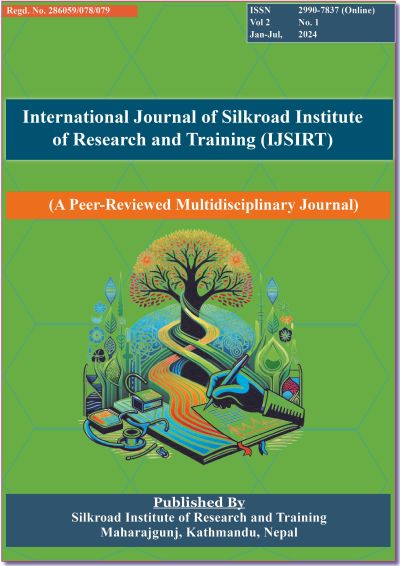Correlation of Cause of Death Issued in Medico Legal Deaths in Hospitals and Cause of Death Found at Autopsy
DOI:
https://doi.org/10.3126/ijsirt.v1i2.68467Keywords:
forensic; death; medico legal deaths; autopsyAbstract
Background:The death certificate is essential for legal investigations and public health planning. This study examines the
accuracy of causes of death reported by hospitals versus post-mortem findings and evaluates the completeness of death
certificates.
Method: A prospective, descriptive study was conducted in 99 cases, with hospital-issued death certificates, brought
for medico-legal autopsy to the Department of Forensic Medicine, Institute of Medicine, Maharajgunj Medical Campus.
Cases which were brought dead to the hospital but still were issued with death certificates and cases where the cause of
death remained undetermined even after autopsy were excluded. Data was recorded in a pro-forma and analyzed using the
SPSS software Version 20.
Result: The study involved individuals aged 13 to 30 years, mostly male. Private hospitals issued 66.7% of death certificates,
with 55.6% by house officers. Only 62.6% met WHO standards. Autopsies were performed within 24 hours in 67.7% of
cases, revealing blunt force head injury as the leading cause of death (26.3%). There was a 67.7% discrepancy between
hospital and autopsy causes of death, with house officers and government hospitals showing notable inconsistencies.
Conclusion: Factors like the use of standard or non-standard death certificates, the designation of doctors, and the type
of hospital issuing the certificates influence the discrepancies between the causes of death listed by hospitals and those
determined after autopsies. This study aims to enhance the existing knowledge on the accuracy of death certificates and is
likely the first systematic study of its kind in Nepal, laying the groundwork for future research.
Downloads
Downloads
Published
How to Cite
Issue
Section
License
Copyright (c) 2024 Kaschev Shrestha , Kabin Neupane , Yoveen Kumar Yadav , Sumee Pradhan

This work is licensed under a Creative Commons Attribution-ShareAlike 4.0 International License.
CC BY-SA: This license allows reusers to distribute, remix, adapt, and build upon the material in any medium or format, so long as attribution is given to the creator. The license allows for commercial use. If you remix, adapt, or build upon the material, you must license the modified material under identical terms.




